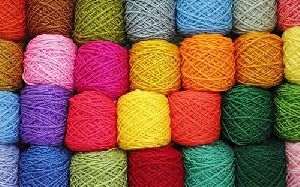-Definition: A water insoluble dye which is converted into a soluble form by treated with a reducing agent in alkali then reconverted into its insoluble form by oxidation. The name Vat was derived from the large wooden vessel from which vat dyes were first applied. The original vat dye is indigo obtained from plant.
-History: Until 1850s, all dyes were obtained from naturals sources, most commonly from vegetables, plants, trees, and lichens with a few from insects. Around 1900 Rene Bohn in Germany accidently prepared a blue dye from ANTHRA scene, which he named as INDIGO dye. After this, BOHN and his Coworkers synthesize many other VAT DYES.
-General properties of Vat dyes: Insoluble in water; Can not be used directly for dyeing; Can be converted to water soluble form; Possess affinity to cellulosic fibers.
-Disadvantages: Limited shade range(bright shade); Sensitive to abrasion; Complicated application procedure; Slow process; Not more suitable for wool.
Post time: May-20-2020











